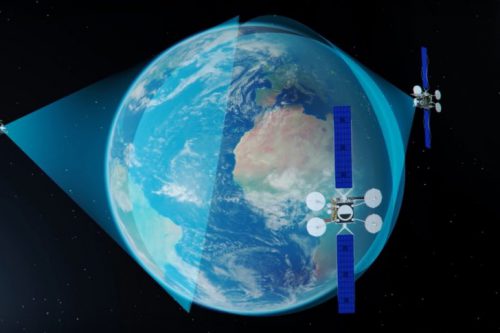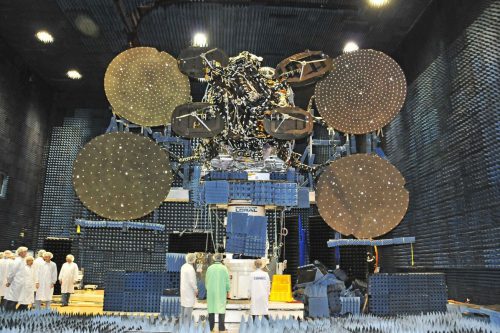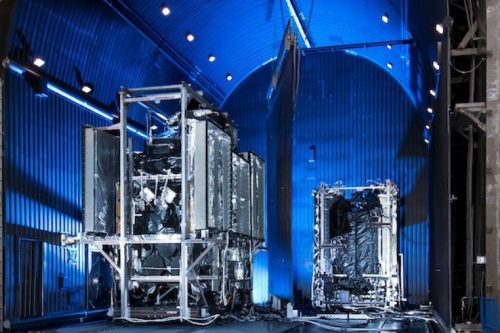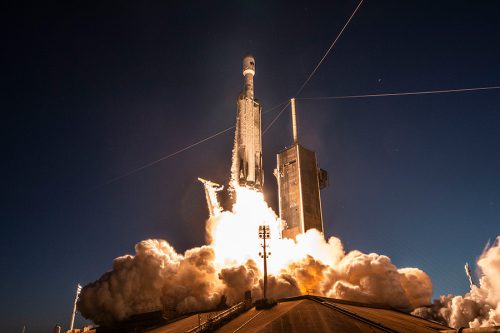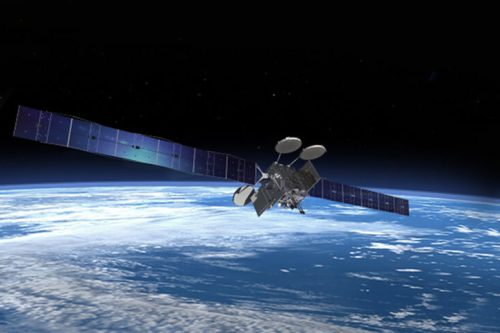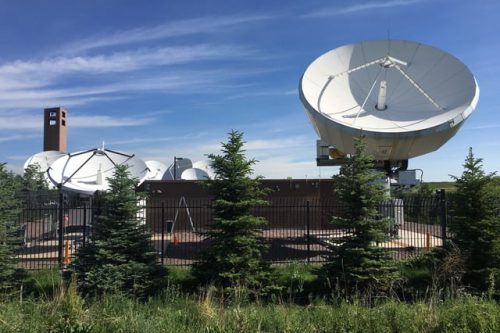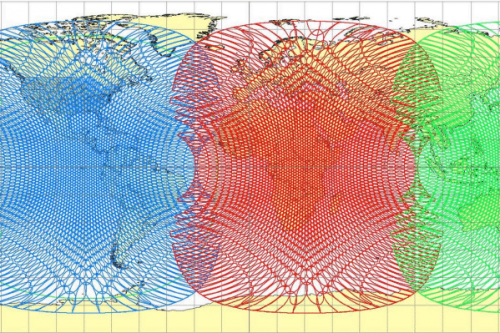Viasat-3 Americas (VS-3 Americas) at 89° West
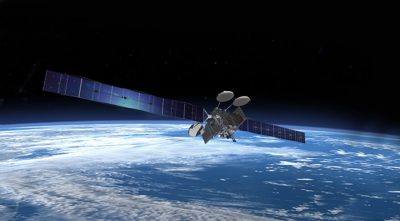
| Position: | 89° West |
| Manufacturer: | Boeing |
| Operator: | Viasat, Inc. |
| Launch operator: | SpaceX |
| Launch vehicle: | Falcon Heavy |
| Launch date: | 05/01/2023 |
| Expected lifetime: | 15+ Years |
The Viasat-3 Americas at 89° West satellite is operated by satellite operator Viasat, Inc. The ultra-high-capacity satellite system is a highly advanced global constellation comprised of three geostationary ViaSat-3 class satellites;
- ViaSat-3 Americas, providing broadband connectivity service to the Americas,
- ViaSat-3 EMEA, providing broadband connectivity service to Europe, Middle-East and Africa,
- ViaSat-3 Asia, providing broadband connectivity service to the Asia-Pacific market.
Each ViaSat-3 class satellite is expected to offer over 1 Terabit per second (Tbps), or 1,000 Gbps, of total network capacity to deliver a global broadband network with enough bandwidth to deliver affordable, high-speed, high-quality internet and video streaming services. The ViaSat-3 constellation is anticipated to have approximately 8x the capacity of Viasat’s current satellite fleet combined.
The ViaSat-3 global satellite constellation is expected to significantly increase the coverage and capacity of Viasat’s network. Nearly half of the capacity of the ViaSat-3 fleet is designed to be available to areas that are currently unconnected or underserved and the constellation will have the flexibility to move bandwidth from low-demand areas to high-demand areas, providing high-speed connectivity for affordably prices.
The satellites were first announced in 2015. In February 2016, Viasat announced a partnership with Boeing Satellite Systems. For each of the three ViaSat-3 class satellites, Viasat will build the satellite payload, integrate the payload into the Boeing-provided payload module. Boeing will provide the scalable 702 satellite platform, system integration and test, launch vehicle integration and mission operations services. Each ViaSat-3 satellite payload is being manufactured at Viasat’s own manufacturing facility in Tempe, Arizona USA. The satellites are expected to weigh 6,400 kg each and are projected to have a total network capacity over 1Tbps.
ViaSat-3 (EMEA) was originally to be procured jointly with satellite operator Eutelsat, but in May 2018, Eutelsat dropped out of the joint venture.
Viasat has three launch contracts, one for each ViaSat-3 class satellite. The company announced plans to launch one of the satellites with launch operator Arianespace on their new Ariane 64 rocket, one with ULA’s Atlas 5 and one with SpaceX on the Falcon Heavy.
Viasat-3 Americas at 89° West was orbited on May 1st, 2023, on a Falcon Heavy rocket operated by SpaceX. The satellite suffered a catastrophic mechanical failure, while deploying the reflector array. Viasat engineers worked on a soluton that resulted in the recovery less than 10% of the throughput of the satellite.
Viasat had staked its growth plans on the added capacity of the satellite, particularly for residential broadband and in-flight connectivity. It is the first in a trio of ViaSat-3 high-capacity satellites to blanket the globe. The company will not require a replacement satellite to meet its growth goals as it believes it can meet its customer commitments with its current fleet with the Inmarsat acquisition, without a replacement ViaSat-3.
The company finalized insurance claims for both ViaSat-3 and the Inmarsat-6 F2, which suffered an anomaly with its power subsystem. The company has insurance coverage of 420 million USD for ViaSat-3, and 348 million USD for the I6 F2 satellite, that is now owned by Viasat after the acquisition of Inmarsat satellite operator in 2021.
